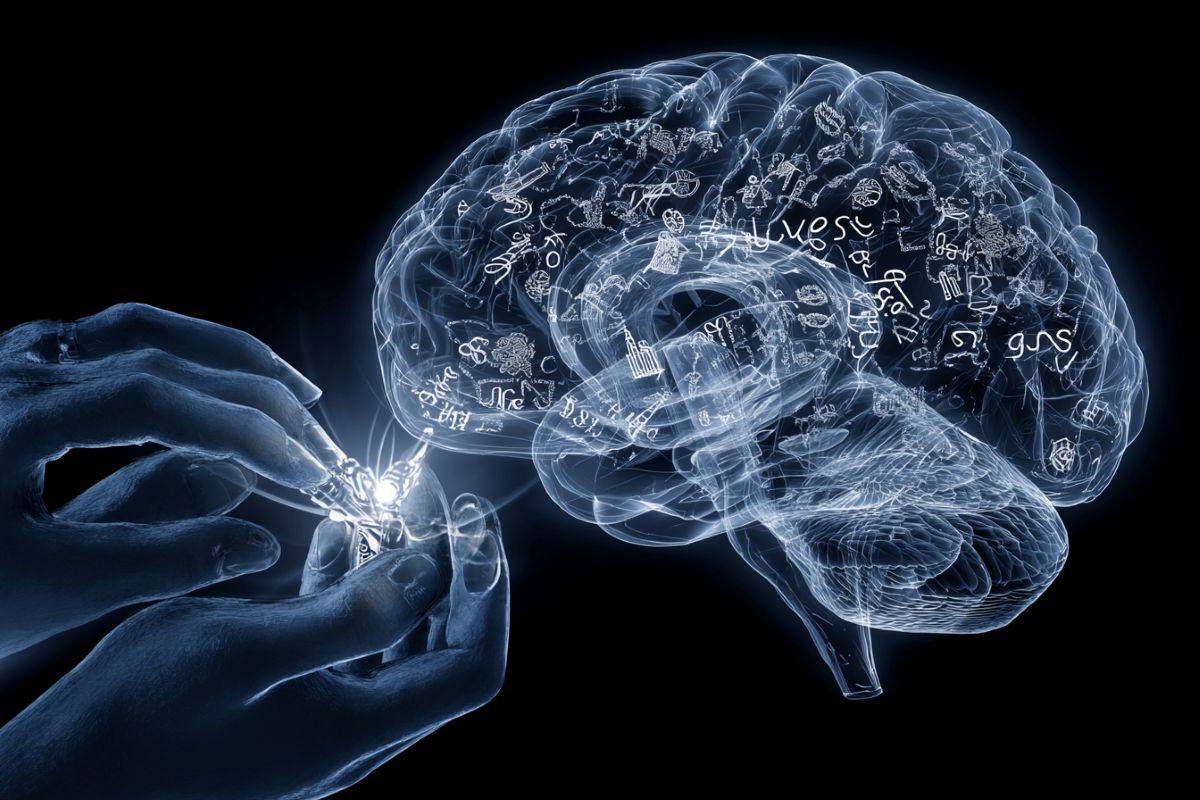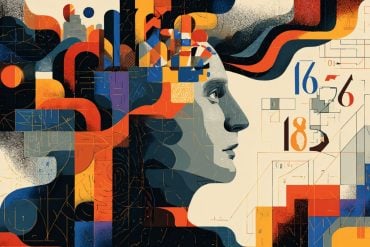Summary: New research shows that the brain organizes hand movements using a kind of “action alphabet” stored in the supramarginal gyrus. This brain region builds complex actions like turning a key or using scissors by recombining small sets of basic movement patterns, or kinematic synergies.
Much like combining letters to form words, these building blocks allow humans to master a vast repertoire of object-directed actions. The discovery has implications for robotics, brain-machine interfaces, and understanding disorders such as apraxia.
Key Facts
- Action Alphabet: The brain uses kinematic synergies to build complex hand actions.
- SMG Role: The supramarginal gyrus functions as an assembly hub for movement.
- Applications: Insights could improve prosthetics, robotics, and treatment of apraxia.
Source: Georgetown University
Conventional wisdom among neuroscientists suggests that the brain’s motor functions are organized around the body, meaning certain brain areas control the hand; others the foot.
An emerging alternative theory is that parts of the brain may be organized by the types of action, like reaching or using tools, no matter which body part is used to complete the task.

Researchers at Georgetown University set out to understand these theories because knowing how the brain is organized around function versus body part has profound implications for rehabilitation and a person’s return to function following a brain injury.
The findings were published August 19 in PNAS (“Action-type mapping principles extend beyond evolutionarily-conserved actions, even in people born without hands”).
“If motor control is partly based on actions rather than body parts, it’s possible the brain can use this flexibility to compensate for the loss of specific limbs,” said the study’s senior author, Ella Striem-Amit, PhD, an assistant professor of neuroscience at Georgetown University School of Medicine.
To gain a deeper understanding about the emerging theory, Striem-Amit and a team of neuroscientists conducted a novel study with volunteers who were born without hands and use their feet for everyday tasks with and without tools.
Using fMRI brain scans, the researchers showed that in these individuals, brain areas typically involved in hand tool use are still active — even though the individuals were using their feet, not their hands. This finding is consistent with the same action preference for control participants, who perform the action with either their hands or feet.
“We found that some regions in the brain care about the type of action a person is doing and not whether this action was performed with the hand or with the foot,” said Florencia Martinez Addiego, a graduate student in Striem-Amit’s lab who led the study.
She said it appears this organization can arise without typical motor experience, providing evidence for action-type as a core driving factor in motor organization and development.
Interestingly, this was not true for all brain areas.
“The primary motor cortex, which is tightly mapped to the body, did not reorganize for foot-based tool use, even in people who have been using tools with their feet their whole lives” said Dr. Yuqi Liu, a former postdoctoral fellow who also led the study. “This suggests that some brain areas demonstrate more plasticity than others.”
Still, the study reveals a kind of brain organization that goes beyond the body — one that is abstract and action-centered, and that develops even without typical experience. They are also expanding on previous findings of brain organization and plasticity in blindness and deafness.
“Many brain regions may be more flexible than previously thought, especially early in development,” Striem-Amit said.
“Just as some areas involved in perception respond to information from any sense, parts of the motor system may represent actions in a way that generalizes across body parts—regardless of which ones a person was born with.”
Study participant Alvin Law, age 65, was born without arms, a birth defect caused by his mother’s use of thalidomide, a drug commonly prescribed for morning sickness in the 1950s and 1960s.
He says, while prosthetics aren’t a good fit for him because he learned to use his legs and feet for daily tasks very young, he recognizes that they are important for people who lose their limbs and that the knowledge learned from this study can improve them.
“I can’t even imagine what it would be like losing a limb of any kind, to whatever cause,” Law said. He hopes his contributions can help people regain a good quality of life through improved technologies.
In addition to Striem-Amit, Georgetown authors include first authors Florencia Martinez Addiego and Yuqi Liu (also with the Chinese Academy of Sciences); Kyungji Moon, Elizabeth Shytle, Lénia Amaral (also with the University of Coimbra, Portugal), Caroline O’Brien, Sriparna Sen (also with the University of Pittsburgh), and Maximilian Riesenhuber; and Jody C. Culham University of Western Ontario, London.
Funding: The research was supported by the Edwin H. Richard and Elisabeth Richard von Matsch Distinguished Professorship in Neurological Diseases and a Shanghai Youth Science and Technology Innovation Plan award.
The authors report having no personal financial interests related to the study.
About this neuroscience and movement research news
Author: Karen Teber
Source: Georgetown University Medical Center
Contact: Karen Teber – Georgetown University Medical Center
Image: The image is credited to Neuroscience News
Original Research: Closed access.
“Action-type mapping principles extend beyond evolutionarily conserved actions, even in people born without hands” by Ella Striem-Amit et al. PNAS
Abstract
Action-type mapping principles extend beyond evolutionarily conserved actions, even in people born without hands
How are actions represented in the motor system?
Although the sensorimotor system is broadly organized somatotopically, higher-level sensorimotor areas encode action-type information for reaching and grasping actions—regardless of the acting body part.
Does the brain similarly support generalization across acting body parts for more evolutionarily recent actions, such as tool-use?
We tested whether there is a body-part-independent action-type organization in sensorimotor areas by examining fMRI responses for tool-use actions that participants performed with their hands or feet.
We additionally included individuals born without hands to test whether hand sensorimotor experience is necessary for the development of this action-type organization. Across analyses, we found a consistent dissociation in the motor system.
The primary sensorimotor cortices encoded concrete, body-part specific information in both groups. In contrast, higher-level motor areas within the tool-use network represent abstract, action-type information independent of the body part for both groups.
Together, our results suggest that the hierarchical organization of the motor system is not dependent on a long evolutionary history of an action. Further, this organization is not dependent on an individual’s manual sensorimotor experience.
Our results also show that the functional reorganization in congenital handlessness follows the hierarchical organization of the intact cortex, revealing the limitations of brain plasticity.
Finally, the results support using a readout of a more abstract code for hierarchical brain–computer interfaces.






